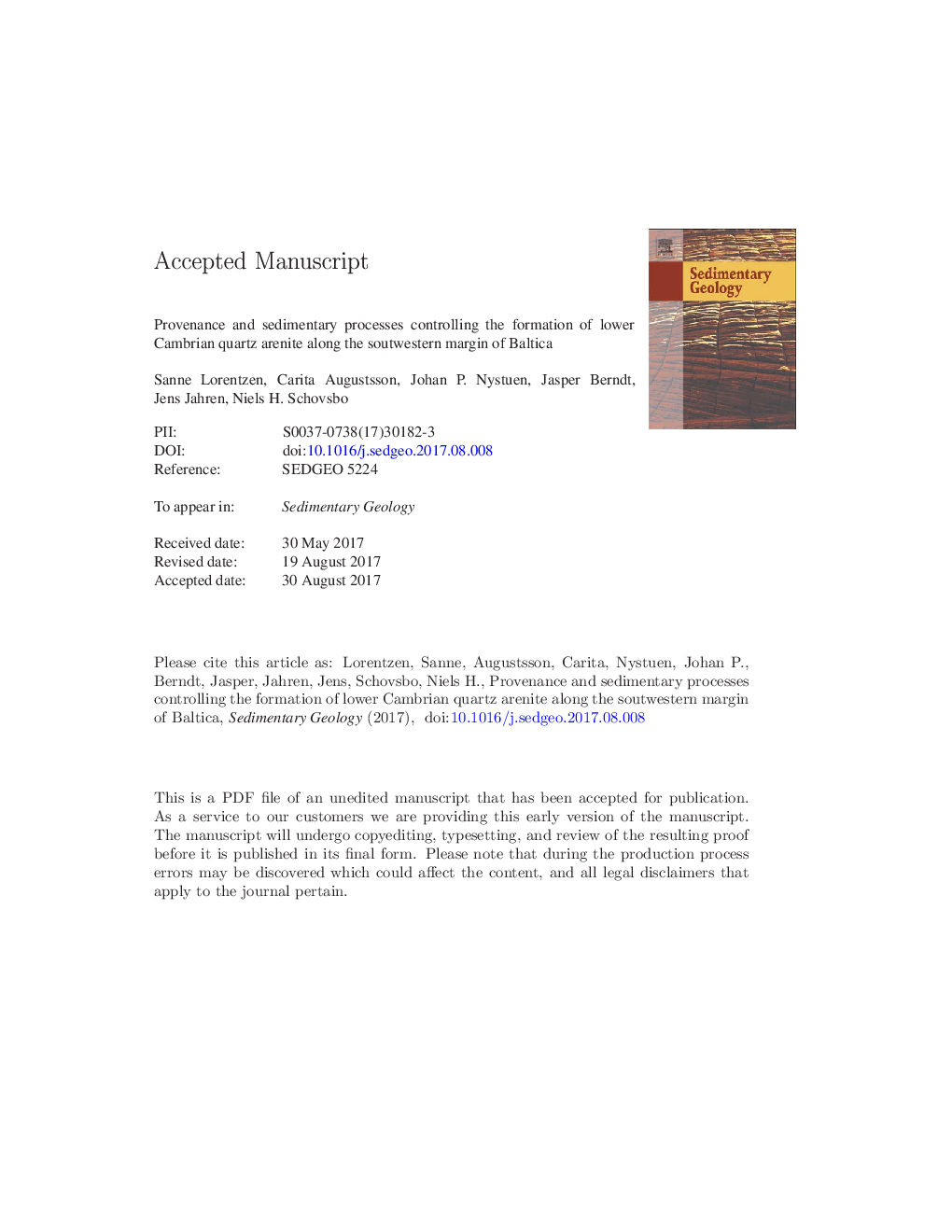| Article ID | Journal | Published Year | Pages | File Type |
|---|---|---|---|---|
| 10224282 | Sedimentary Geology | 2018 | 52 Pages |
Abstract
Lower Cambrian shallow marine quartz arenite records a transgressive regime related to a global basal Cambrian eustatic sea-level rise. Six sections from southern Norway, southern Sweden, and Denmark are investigated to explore the genesis and sourcing of these mineralogically mature deposits and the early Cambrian tectono-sedimentary history of Baltica. U-Pb ages of detrital zircon grains are dominantly 0.9-1.8Â Ga, in accordance with transport from the Transscandinavian Igneous Belt (TIB) and domains related to the Sveconorwegian and Gothian orogenies. These zircon grains have a hydrodynamic relation with the quartz grains, suggesting a common provenance for the zircon grains and the main clastic material. Similar provenance for Norway and southern Sweden favors a setting with the present day Sveconorwegian Orogenic Belt originally extending further southeast into the present Skagerrak and Kattegat area and northwest in westernmost Norway. Furthermore, marked provenance differences with other earliest Cambrian deposits on Baltica indicate a catchment divide between the Sveconorwegian Orogenic Belt and the TIB-Gothian domains. First sediment-cycle origin for the studied sandstone is proposed based on: 1) a general low age diversity and 2) a lack of late Palaeoproterozoic and Archaean zircon U-Pb ages, which are typical for Mesoproterozoic quartzite. The high sandstone maturity may instead be the result of prolonged exposure to weathering and reworking processes made possible by the low gradient of the Sub-Cambrian Peneplain.
Related Topics
Physical Sciences and Engineering
Earth and Planetary Sciences
Earth-Surface Processes
Authors
Sanne Lorentzen, Carita Augustsson, Johan P. Nystuen, Jasper Berndt, Jens Jahren, Niels H. Schovsbo,
